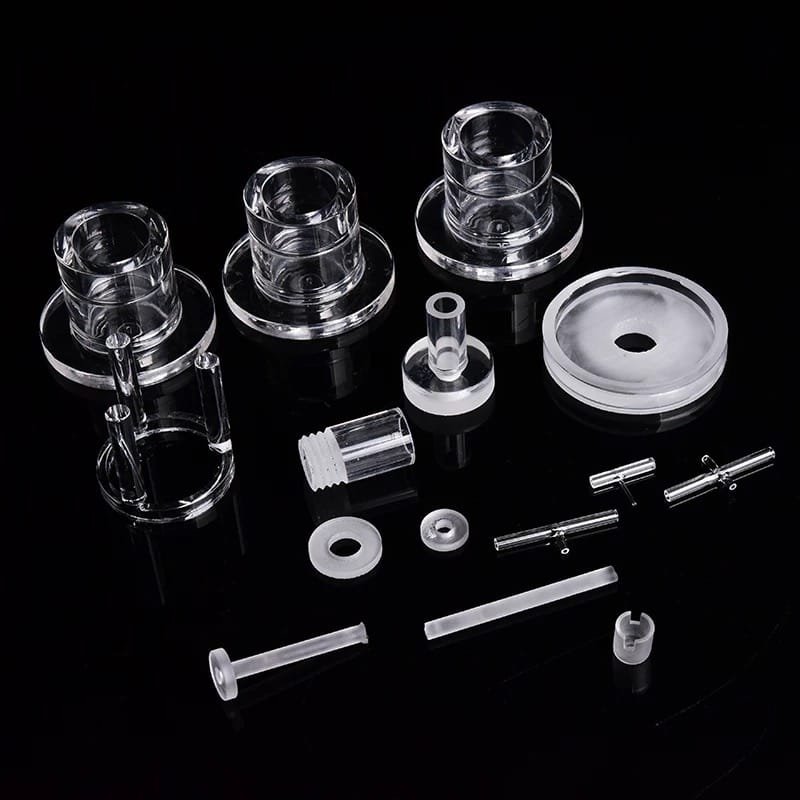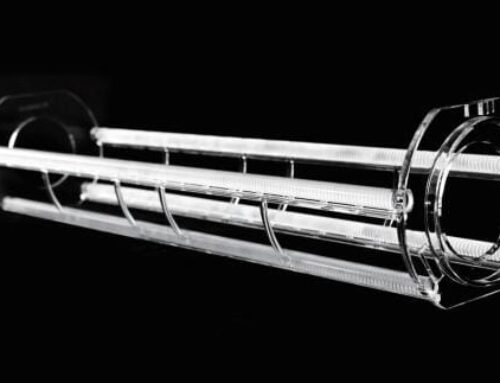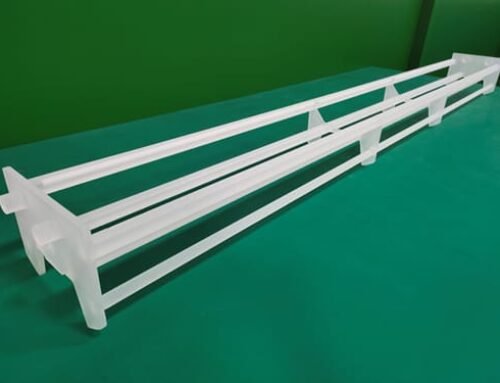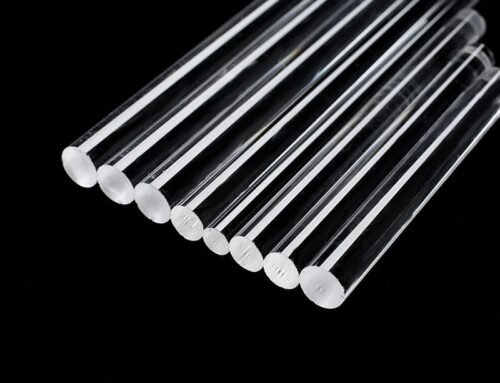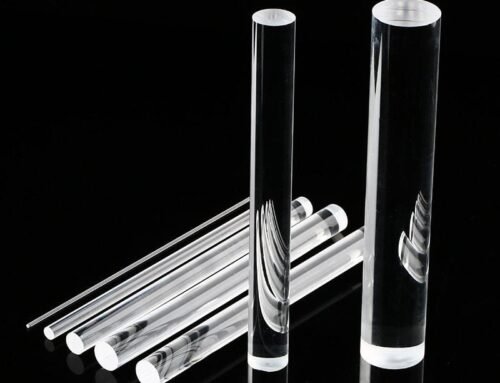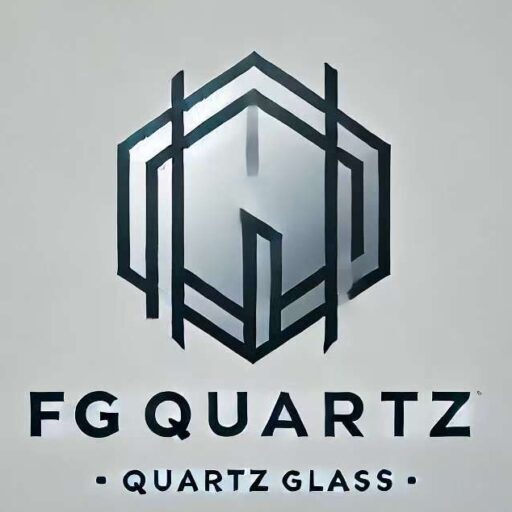Introduction to Quartz Glass and Its Applications
Quartz glass, also known as fused silica, is a non-crystalline form of silicon dioxide with exceptional properties that make it a valuable material in various industries. One of its most notable characteristics is its high transparency to ultraviolet (UV) light, which makes it an ideal choice for applications in optics, such as lenses and prisms. The material also boasts impressive thermal resistance, allowing it to withstand extreme temperature variations without compromising integrity. This attribute is crucial in industries where high-temperature processes are common, such as semiconductor fabrication and thermal processing.
In addition to its transparency and thermal stability, quartz glass demonstrates remarkable chemical durability. It is highly resistant to acids and has low reactivity with other chemical substances, allowing it to perform effectively in harsh environments. This property is particularly advantageous in scientific research, where precise and reliable glass components are required for laboratory instruments, such as cuvettes and reaction vessels. Furthermore, quartz glass is utilized in the manufacturing of high-purity components essential for maintaining the integrity of sensitive applications across various fields.
The versatility of quartz glass extends to its role in the electronics industry, where it is used in the production of substrates for semiconductor devices and in the housing of precise optical components like fiber-optic cables. The demand for precision CNC machining of quartz glass parts has grown significantly, driven by the need for high-quality components that adhere to stringent specifications. As industries continue to evolve and technology advances, the importance of utilizing advanced machining techniques to produce quartz glass parts that meet exacting standards becomes increasingly evident. This guide aims to provide a comprehensive understanding of the machining processes involved in creating such essential components for modern applications.
Understanding CNC Machining
CNC (Computer Numerical Control) machining is a sophisticated manufacturing process that employs advanced computer systems to control machine tools. In contrast to traditional machining methods, which rely heavily on manual control, CNC machining operates through precise programming, allowing for remarkable accuracy and efficiency in the production of complex parts. The technology interprets a Computer-Aided Design (CAD) drawing and translates it into specific movements and operations of the machinery, ensuring that every cut and shape adheres to the intended specifications.
One of the key advantages of CNC machining lies in its ability to produce intricate pieces with high repeatability. This is particularly important for industries that require quartz glass parts with exact dimensions and tolerances. With CNC equipment, manufacturers can create complex configurations that would be challenging or impossible to achieve using manual machining techniques. The technology’s automation significantly reduces the risk of human error, contributing to enhanced quality and consistency of quartz glass components.
Furthermore, CNC machining is capable of handling a variety of materials, including metals, plastics, and, notably, quartz glass. The compatibility with quartz glass is especially advantageous due to the material’s unique properties, such as its optical clarity and resistance to thermal shock. CNC machines equipped with diamond tools or specialized bits can efficiently cut, drill, and shape quartz glass, resulting in parts that meet the rigorous demands of the semiconductor, optical, and aerospace industries.
Overall, the precision offered by CNC machining, combined with its ability to automate complex manufacturing processes, makes it an invaluable technology for producing quartz glass parts. By employing this method, manufacturers can ensure that their products not only meet but exceed performance standards in various applications.
The Importance of Precision in Machining Quartz Glass
Precision is paramount in the CNC machining of quartz glass parts, as any inaccuracies can result in significant performance issues. Quartz glass, known for its exceptional optical clarity and thermal stability, necessitates strict tolerances to ensure that the final product meets the stringent requirements of various applications, such as in the semiconductor and aerospace industries. The dimensional accuracy of quartz glass components directly influences their functionality; even minor deviations from specified measurements can lead to catastrophic failures in highly sensitive equipment.
For instance, in optical applications, precision machining determines how light interacts with the surface of quartz glass. A variance in surface finish or dimensional integrity can induce optical distortions, leading to reduced performance in devices such as lenses and prisms. A case study involving laser systems demonstrates that machined quartz components, when produced with tolerances of +/-0.01 mm, achieved substantial improvements in light transmission efficiency compared to those produced with loose tolerances. This illustrates how precision is not merely a preferential trait but a core necessity in producing reliable quartz glass parts.
Moreover, the significance of surface finish cannot be overstated. A polished surface finish not only enhances aesthetic appeal but also impacts the physical characteristics of the quartz glass. An optimized surface minimizes issues like stress concentration and susceptibility to environmental factors. Consequently, manufacturers must adopt advanced CNC machining processes that comply with precise specifications, ensuring superior surface quality and maximal performance of quartz glass parts. The reliability of these components hinges on rigorous adherence to precision standards, underscoring its critical role in the successful machining of quartz glass.
Machining Techniques for Quartz Glass Parts
Quartz glass, known for its excellent optical clarity and thermal resistance, requires specialized machining techniques to achieve desired geometries and surface finishes. Among the most prominent methods are diamond machining, grinding, and milling, each offering unique advantages and limitations that can significantly impact the final product.
Diamond machining is one of the most effective techniques for processing quartz glass. This method utilizes diamond-tipped tools, which provide unparalleled precision and surface finish. The hardness of diamonds allows for the creation of intricate shapes and fine details, making this method ideal for optical components. However, diamond machining often necessitates a significant investment in specialized equipment, which could be a deterrent for smaller manufacturers. Additionally, the process may generate high temperature, potentially leading to thermal stress if not managed properly.
Grinding is another widely adopted technique for machining quartz glass parts. This method employs grinding wheels, traditionally made from abrasive materials, which can effectively remove material while achieving acceptable surface finishes. Grinding often proves more cost-effective than diamond machining and is suitable for larger volume production. Nevertheless, the limitations of grinding include the potential for surface degradation due to heat buildup, as well as the necessity for more extensive post-processing to meet stringent optical specifications.
Milling, on the other hand, utilizes rotating cutting tools to remove material from quartz glass. This technique is effective for producing complex geometries and maintaining tight tolerances. While milling machines can be adjusted for different applications, there is a risk of cracking or chipping quartz glass if the parameters are not appropriately controlled. Therefore, selecting the right milling equipment is critical for successful machining. Ultimately, each technique presents its benefits and challenges, necessitating careful consideration based on the specific requirements of the quartz glass part being manufactured.
Choosing the Right Tools and Equipment
The success of precision CNC machining of quartz glass parts significantly depends on the selection of appropriate tools and equipment. The unique properties of quartz glass necessitate specialized cutting tools that are capable of handling its hardness and brittleness. Generally, diamond-coated tools are preferred for machining quartz due to their exceptional hardness. These tools provide a smoother finish and extended life, as they minimize wear during the machining process. Additionally, carbide tools can be effective, but they may require more frequent replacement because they are not as resilient as diamond-coated options.
When selecting cutting tools, the type and geometry play a crucial role. Tools with sharp cutting edges and proper geometries aid in reducing the stress on the material while enhancing the precision of the cut. It’s important to consider factors such as the tool’s diameter, flute design, and cutting angles, which should be tailored to the specific machining operation—be it milling, grinding, or drilling.
Moreover, tool coatings can greatly impact performance. Enhanced coatings, such as titanium nitride (TiN) or aluminum titanium nitride (AlTiN), can improve the tool’s durability, reduce friction, and minimize the likelihood of wear and tear. These coatings provide the necessary protection against heat generated during machining, which is particularly important with materials as sensitive as quartz glass.
Equally important is the CNC machine itself. It should offer high precision and rigidity to accommodate the specific demands of quartz glass machining. Compatibility with specific cutting speeds and feed rates needs to be analyzed, as quartz glass requires careful handling to avoid fractures or chipping. Selecting equipment with customizable settings will allow operators to optimize configurations for quartz glass, significantly enhancing machining performance while extending the longevity of both tools and machines.
Quality Control in Quartz Machining
Quality control is a pivotal aspect of the CNC machining process when manufacturing quartz glass parts. Given the unique properties of quartz, including its optical clarity and thermal resistance, ensuring that these components meet stringent quality standards is imperative for their intended applications. Various inspection techniques and measurement tools play essential roles in maintaining the integrity of quartz machined products.
One common method for inspecting quartz glass parts is visual inspection, where trained technicians evaluate the surface for any defects, such as chips, cracks, or inconsistencies. This method is often coupled with optical measuring techniques, which can provide an enhanced view of the quartz surface and allow for the detection of finer imperfections that might not be visible to the naked eye. Advanced imaging technology, such as laser scanning and digital microscopy, can further assist in this evaluation, ensuring that all components adhere to the specified dimensions and quality benchmarks.
In addition to visual assessments, various measurement tools are used to ensure precise dimensions and tolerances. Calipers, micrometers, and coordinate measuring machines (CMMs) all serve critical roles in the measurement process. Each tool is chosen based on the specific requirements of the quartz part being machined. Additionally, the implementation of statistical process control (SPC) methods can be beneficial in monitoring the machining process. SPC involves the use of data analysis tools to identify variations in the production process, allowing manufacturers to take corrective actions before defects arise.
By establishing a comprehensive quality control system encompassing these inspection techniques and measurement tools, manufacturers can assure that their quartz glass parts not only meet but exceed industry standards, resulting in components that fulfill their operational purpose effectively.
Common Challenges and Solutions in Machining Quartz Glass
Machining quartz glass presents several unique challenges inherent to its physical properties. One of the most notable issues is brittleness. Quartz glass, known for its hardness, is also prone to cracking or chipping during the machining process. To mitigate brittleness-related challenges, it is essential to utilize tools specifically designed for hard materials, such as diamond-coated end mills or specialized carbide tools. These tools can effectively reduce impact forces on the glass surface, minimizing the risk of damage.
Another significant challenge encountered in the CNC machining of quartz glass is tool wear. The abrasive nature of quartz can lead to rapid deterioration of the cutting edges, resulting in decreased machining efficiency and quality. Regular monitoring of tool condition is vital; operators should consider employing a tool wear detection system. Furthermore, utilizing tools with a higher wear resistance can extend tool life. Adjusting machining parameters such as feed rate and cutting speed can also help in managing wear rates and prolonging tool durability.
Chip removal represents yet another hurdle in machining quartz glass parts. The fine chips generated during the machining process can easily accumulate, leading to poor surface finish and potential damage to both the workpiece and the machine. To address issues related to chip removal, implementing an efficient vacuum or air-blow system is beneficial. This system can effectively clear debris from the machining area, ensuring a cleaner working environment. Additionally, adopting appropriate coolant strategies, such as using compressed air or specialized coolant fluids, can help reduce heat generation and enhance chip evacuation during the process.
By understanding these challenges and effectively implementing the proposed solutions, manufacturers can improve their CNC machining processes for quartz glass components, ensuring high precision and optimal quality.
Future Trends in Quartz Glass CNC Machining
The landscape of CNC machining for quartz glass parts is evolving rapidly, driven by advancements in technology and the need for increased efficiency and precision. Emerging trends highlight a continued focus on automation, as manufacturers seek to streamline processes and minimize human error. Automation technologies, including robotics and advanced CNC systems, are enhancing the production of quartz glass by enabling quicker setups and consistent output quality, thereby reducing downtime and operational costs.
Artificial intelligence (AI) is also making significant strides in the CNC machining sector. The integration of AI in machining processes allows for real-time monitoring and adjustments, optimizing the machining parameters based on specific job requirements. This capability not only enhances precision in the manufacturing of quartz glass parts but also allows for predictive maintenance, ensuring that machines operate efficiently without unexpected breakdowns. By analyzing data, AI can identify patterns that help improve machining strategies and reduce waste, aligning with modern industry demands for sustainability and efficiency.
In addition to technological advancements, new materials are being explored that could influence the future of quartz glass machining. These materials may offer improved thermal stability, chemical resistance, and enhanced optical properties, potentially expanding the applications of quartz glass in various industries, including electronics and medical devices. The search for alternative materials that complement or enhance quartz glass properties may lead to innovative methods of CNC machining, thereby pushing the boundaries of what is possible in precision manufacturing.
As these trends continue to develop, the quartz glass CNC machining industry is poised for transformative changes. Companies that embrace these innovations will likely gain a competitive edge, positioning themselves as leaders in a field characterized by continuous improvement and adaptation to new technologies.
Conclusion and Best Practices
In summary, precision CNC machining of quartz glass parts is a complex and highly specialized process that requires an in-depth understanding of both materials and technologies. Throughout this comprehensive guide, we have explored essential aspects, including the properties of quartz glass, the specific techniques involved in machining it, and the importance of precision and accuracy in production. These elements are critical for achieving high-quality outcomes in various applications, ranging from electronics to laboratory equipment.
As the demand for quartz glass components continues to grow, businesses and professionals in the CNC machining industry must remain knowledgeable and adaptable. Continuous learning through courses, workshops, and industry conferences is beneficial to keep abreast of the latest techniques and advancements in technology. Understanding emerging methods such as laser machining or advancements in CNC software can significantly enhance machining efficiency and product quality.
Moreover, maintaining a strong emphasis on best practices during machining procedures is crucial. Adopting strategies such as conducting thorough material inspections, utilizing optimal tooling and cooling methods, and implementing stringent quality control measures can lead to enhanced precision and reduced waste. It is also advisable to foster strong collaborations with suppliers and technology providers to ensure the use of high-grade materials and equipment.
Ultimately, the goal of CNC machining quartz glass parts is not only to meet current market demands but also to anticipate future trends. By embracing innovation and striving for excellence in machining processes, professionals can position themselves competitively in the evolving landscape of the quartz glass industry. Whether one is a seasoned expert or a newcomer to the field, the commitment to learning and improvement will serve as a solid foundation for success in precision CNC machining.
